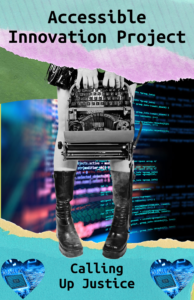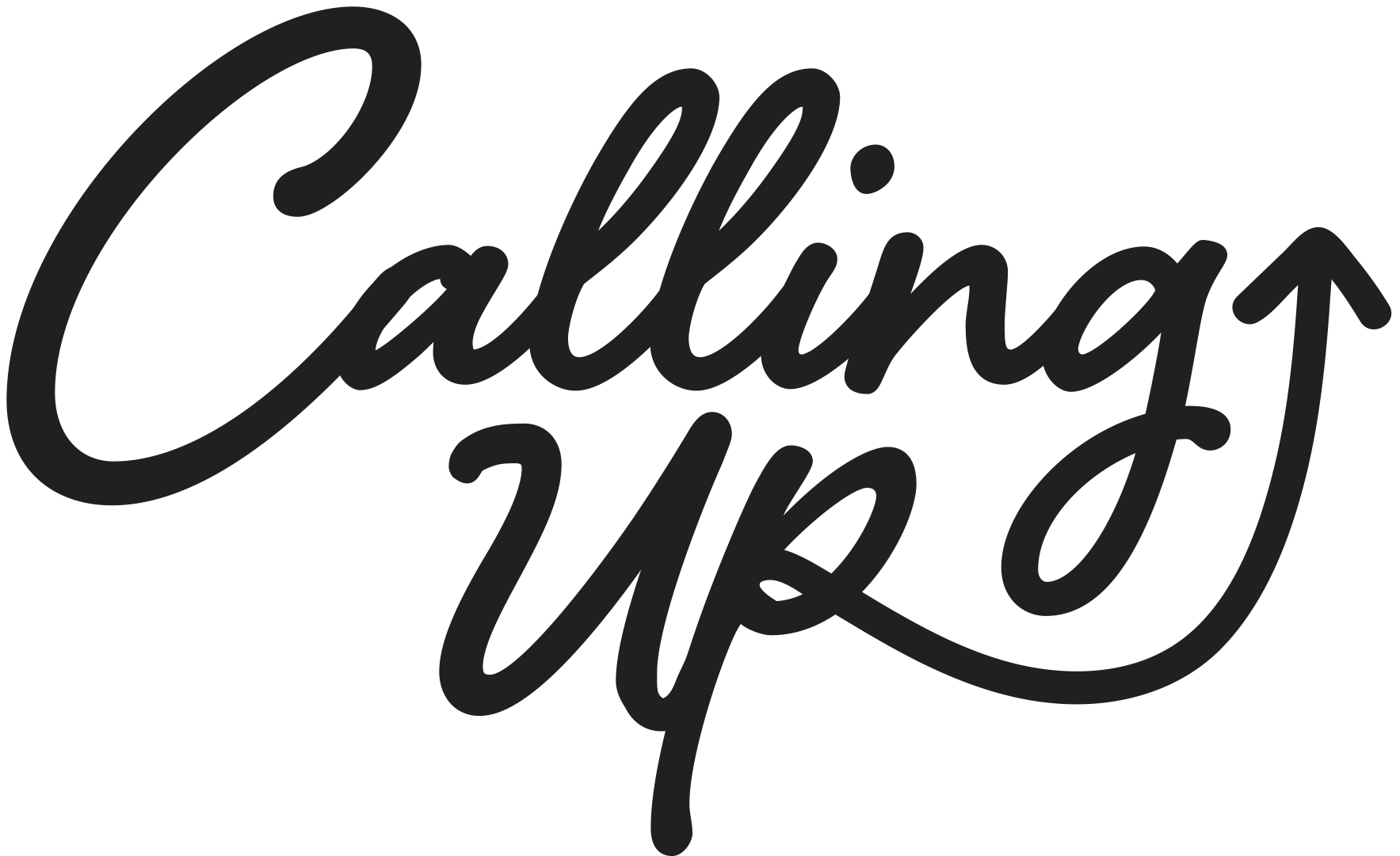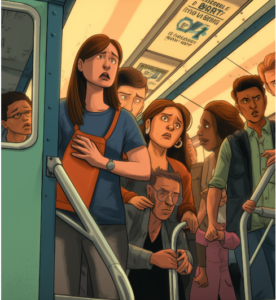Accessible Innovation Project:
Calling Up Justice using Artificial Intelligence to Increase Inclusion for Disabled Creators

Calling Up Justice is a company that is conducting an exciting project aimed at experimenting with accessibility and machine learning technology to increase empowerment for disabled creators. The project involved selecting a video or other writing source featuring disabled creators sharing their clever ideas for 1-3 minutes. Free platforms were then used to transcribe the video, which was subsequently fed into Chat GPT to produce an essay that authentically reflected the creators’ voices and ideas. With the help of Claudia Alick’s fine tuning data and prompts, the resulting essays were representative of the disabled creators’ perspectives. This project exemplifies how artificial intelligence technology can be leveraged to empower marginalized communities and create a more inclusive society, with minimal effort on the part of the creators. The following article was built off a tiktok video published by Skully in a livestream session with Claudia.
Breaking the Bystander Effect: Taking Action to Prevent Lynchings of Black People
by Skully (produced by Claudia Alick via Chat-GPT)
I recently attended a bystander training and wanted to share what I learned with all of you. In light of recent events, it’s more important than ever to know how to intervene and prevent the lynching of Black people. The bystander effect is when people in a crowd witnessing something bad happening don’t intervene because they assume someone else will do it. This can lead to terrible consequences, like the tragic murder of Jordan Neely.
The key takeaway from my training was that we can’t wait for someone else to intervene. We have to be that someone. When even one person steps up, it encourages others to do the same. It breaks the barrier and creates a ripple effect. So don’t hesitate, take action.
There are many ways to intervene and de-escalate a situation while keeping yourself safe. You don’t have to physically fight or put yourself in danger. Just speaking up and using your words can make a big difference. For example, you can walk up to someone and say, “Hey, let that person go. You’re hurting them.” Or, “Someone needs to call for help.” (It’s best practice to point to a specific person and request that they press the emergency button on the subway or call 911.) Sometimes, before a situation is about to escalate to physical violence, just asking a simple question like, “What time is it?” can disrupt a situation and give people a chance to diffuse.
De-escalation with humor or distraction can also be a useful tool. It’s important to use the skills and tools that you have at your disposal. If you’re not comfortable with confrontation, try something that aligns more with your personality. For example, you could make a joke or ask a distracting question to get people to refocus.
During my training, the facilitator asked us to brainstorm solutions to different hypothetical situations where bystander intervention is necessary. It was surprising how easily we all came up with ideas. The truth is, we already have what it takes to intervene. It’s not about having fancy skills like hostage negotiation often depicted in movies. It’s about finding the courage within you to speak up and take action. Attending bystander intervention and de-escalation training in your community is highly encouraged because they will focus on scenarios most commonly occurring in your area.
I hope that sharing what I learned can help prevent tragedies like the one that happened to Jordan Neely. We can all be a part of the solution by being proactive and intervening when we see something wrong. It’s up to us to break the bystander effect and create a safer world for everyone.
I recently attended a bystander training and wanted to share what I learned with all of you. In light of recent events, it’s more important than ever to know how to intervene and prevent the lynching of Black people. The bystander effect is when people in a crowd witnessing something bad happening don’t intervene because they assume someone else will do it. This can lead to terrible consequences, like the tragic murder of Jordan Neely.
The key takeaway from my training was that we can’t wait for someone else to intervene. We have to be that someone. When even one person steps up, it encourages others to do the same. It breaks the barrier and creates a ripple effect. So don’t hesitate, take action.
There are many ways to intervene and de-escalate a situation while keeping yourself safe. You don’t have to physically fight or put yourself in danger. Just speaking up and using your words can make a big difference. For example, you can walk up to someone and say, “Hey, let that person go. You’re hurting them.” Or, “Someone needs to call for help.” (It’s best practice to point to a specific person and request that they press the emergency button on the subway or call 911.) Sometimes, before a situation is about to escalate to physical violence, just asking a simple question like, “What time is it?” can disrupt a situation and give people a chance to diffuse.
De-escalation with humor or distraction can also be a useful tool. It’s important to use the skills and tools that you have at your disposal. If you’re not comfortable with confrontation, try something that aligns more with your personality. For example, you could make a joke or ask a distracting question to get people to refocus.
During my training, the facilitator asked us to brainstorm solutions to different hypothetical situations where bystander intervention is necessary. It was surprising how easily we all came up with ideas. The truth is, we already have what it takes to intervene. It’s not about having fancy skills like hostage negotiation often depicted in movies. It’s about finding the courage within you to speak up and take action. Attending bystander intervention and de-escalation training in your community is highly encouraged because they will focus on scenarios most commonly occurring in your area.
I hope that sharing what I learned can help prevent tragedies like the one that happened to Jordan Neely. We can all be a part of the solution by being proactive and intervening when we see something wrong. It’s up to us to break the bystander effect and create a safer world for everyone
Bystander Intervention
@skullncajons Replying to @skullncajons #jordanneely #bystandereffect
♬ original sound – skully 💀

